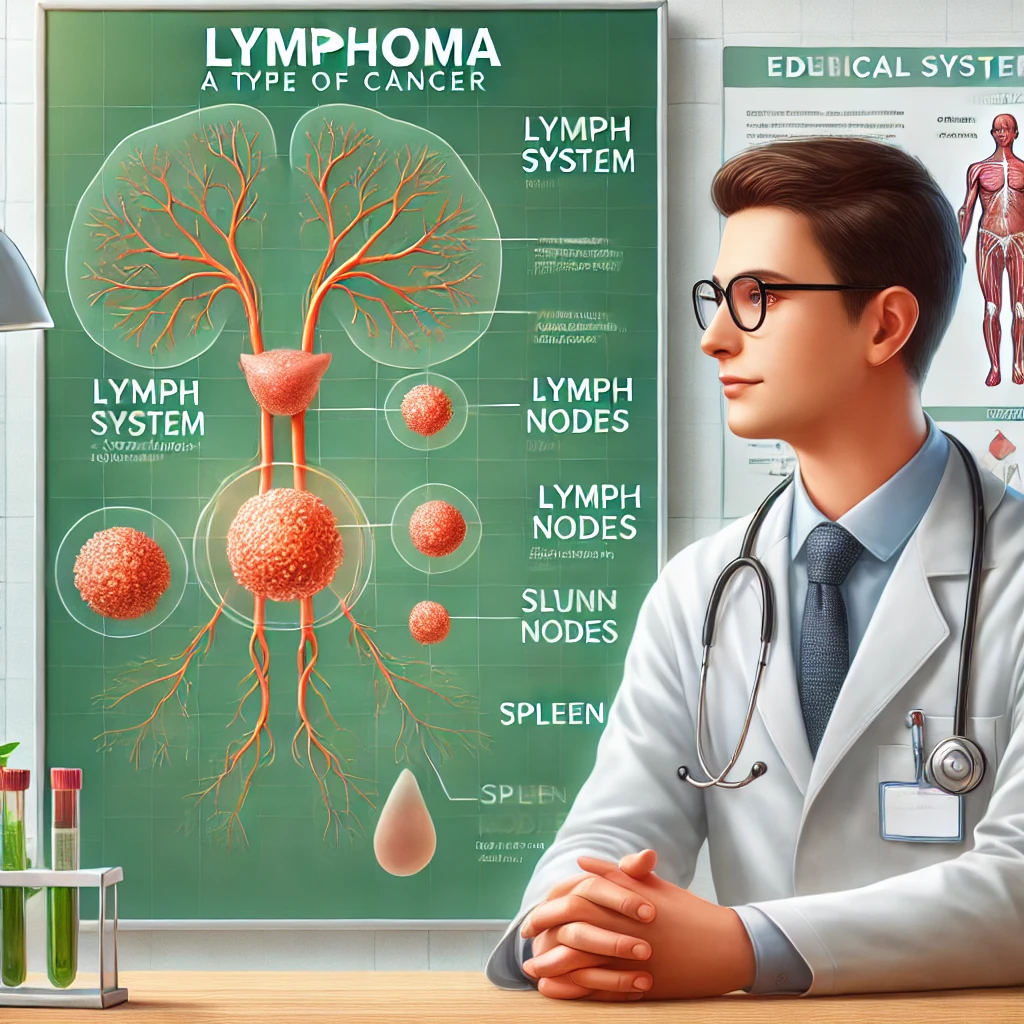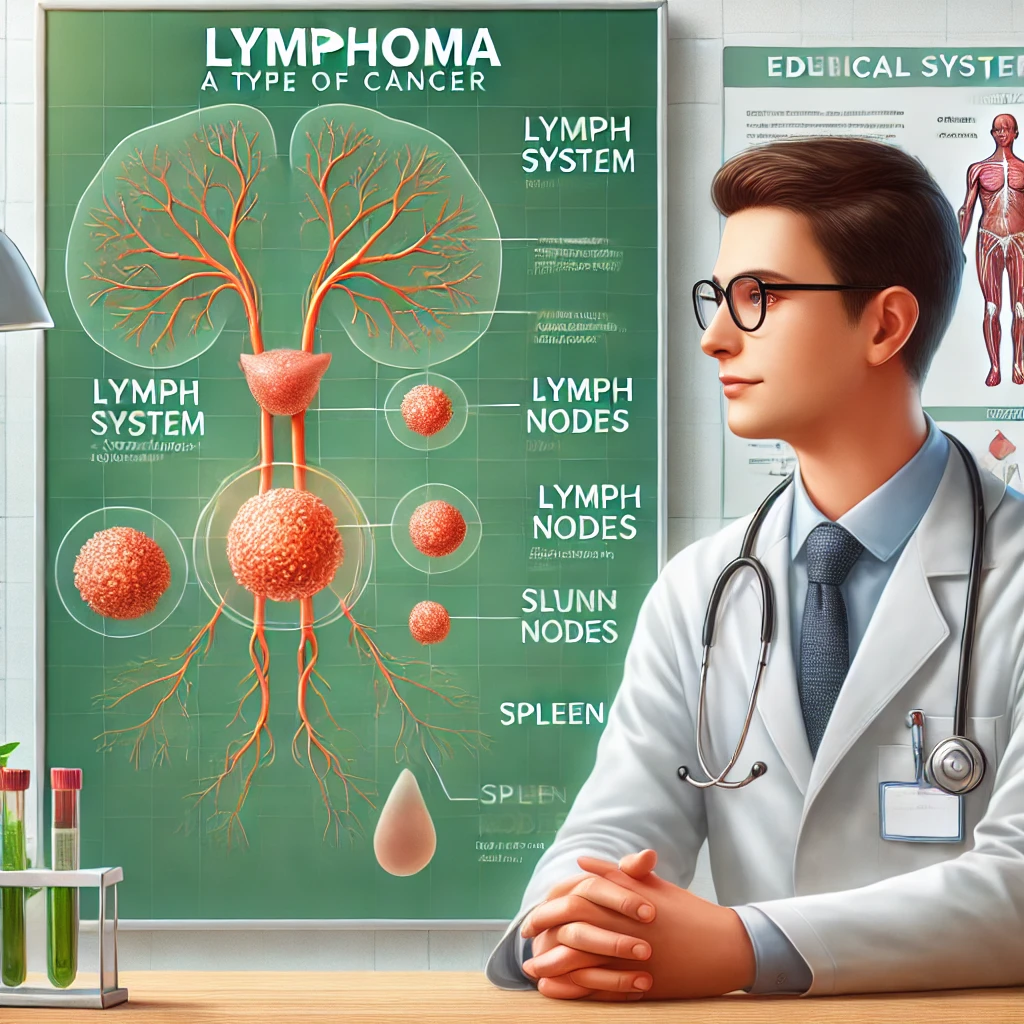Lymphoma is a type of cancer that begins in the lymphatic system, a crucial part of your immune defense. With various types and treatment options available, understanding lymphoma can help you or a loved one navigate this journey with confidence. This article dives into everything you need to know—from symptoms to treatments and beyond.

What Is Lymphoma?
Lymphoma is a cancer affecting the lymphatic system, which includes lymph nodes, spleen, thymus, and bone marrow. It occurs when white blood cells called lymphocytes grow uncontrollably, forming tumors.
Types of Lymphoma
There are two primary types:
- Hodgkin Lymphoma (HL): Identified by the presence of Reed-Sternberg cells under a microscope.
- Non-Hodgkin Lymphoma (NHL): More common and includes many subtypes, such as diffuse large B-cell lymphoma and follicular lymphoma.
How Common Is Lymphoma?
In the USA, lymphoma is one of the most frequently diagnosed cancers. According to the American Cancer Society, it accounts for about 4% of all cancer cases annually.
Signs and Symptoms of Lymphoma
Early detection can make a significant difference. Common symptoms include:
- Swollen lymph nodes in the neck, armpits, or groin.
- Persistent fatigue.
- Fever and chills.
- Night sweats soaking your sheets.
- Unexplained weight loss.
- Itchy skin or a rash.
Tip: These symptoms might resemble other illnesses. If they persist, consult your doctor promptly.
What Causes Lymphoma?
While the exact cause is unknown, several factors can increase your risk:
1. Weak Immune System
Conditions like HIV/AIDS or organ transplants requiring immunosuppressive drugs can raise your risk.
2. Infections
Certain infections, such as Epstein-Barr virus (EBV) or Helicobacter pylori, are linked to lymphoma.
3. Age and Gender
Most types of lymphoma are more common in older adults and affect men slightly more than women.
Diagnosing Lymphoma
1. Physical Exam
A doctor may check for swollen lymph nodes or other abnormalities.
2. Blood Tests
Tests like a complete blood count (CBC) assess overall health and detect issues.
3. Biopsy
A small sample of tissue from a lymph node is examined under a microscope to confirm lymphoma.
4. Imaging Tests
CT scans, PET scans, or MRIs are used to determine the extent of the disease.
Stages of Lymphoma
Lymphoma is classified into four stages:
- Stage I: Limited to one lymph node region or organ.
- Stage II: Involves two or more lymph node regions on the same side of the diaphragm.
- Stage III: Affects lymph nodes on both sides of the diaphragm.
- Stage IV: Has spread to distant organs like the liver or bone marrow.
Treatment Options
Treatment depends on the type, stage, and overall health. Common treatments include:
1. Chemotherapy
The primary treatment for lymphoma, it uses drugs to kill rapidly growing cancer cells.
2. Radiation Therapy
High-energy beams target and destroy cancerous cells.
3. Immunotherapy
This uses the body’s immune system to fight cancer, often with monoclonal antibodies.
4. Targeted Therapy
Drugs like rituximab specifically attack cancerous cells without harming healthy tissue.
5. Stem Cell Transplant
Replaces damaged bone marrow with healthy stem cells after high-dose chemotherapy.
Living With Lymphoma
Receiving a lymphoma diagnosis is overwhelming, but many people achieve remission and live full lives. Surround yourself with a strong support system and maintain open communication with your medical team.
“Lymphoma doesn’t define you—your strength and courage do.”
Reducing Your Risk
While lymphoma cannot always be prevented, you can lower your risk by:
- Staying active and eating a healthy diet.
- Avoiding exposure to known carcinogens like pesticides.
- Treating infections promptly.
- Maintaining a strong immune system through good health habits.
For more detailed information and tips, visit medicaltimes.io, your trusted resource for medical insights.
Top 10 Frequently Asked Questions (FAQs)
- What is the difference between Hodgkin and Non-Hodgkin Lymphoma?
Hodgkin Lymphoma has Reed-Sternberg cells, while Non-Hodgkin Lymphoma includes various subtypes without these cells. - Is lymphoma curable?
Many types are curable, especially with early detection and treatment. - What is the most common symptom of lymphoma?
Swollen lymph nodes are the most common early sign. - Who is most at risk for lymphoma?
Older adults, men, and individuals with weakened immune systems. - Can lifestyle changes prevent lymphoma?
While not guaranteed, a healthy lifestyle can reduce overall cancer risks. - How is lymphoma detected?
Through physical exams, blood tests, biopsies, and imaging studies. - What is the survival rate for lymphoma?
Survival rates vary by type and stage. Early-stage Hodgkin Lymphoma has a 5-year survival rate of over 90%. - Does chemotherapy always cause hair loss?
Not always, but it depends on the specific drugs used. - Can children get lymphoma?
Yes, but it is more common in adults. - What is remission?
Remission means no active signs of cancer after treatment.
